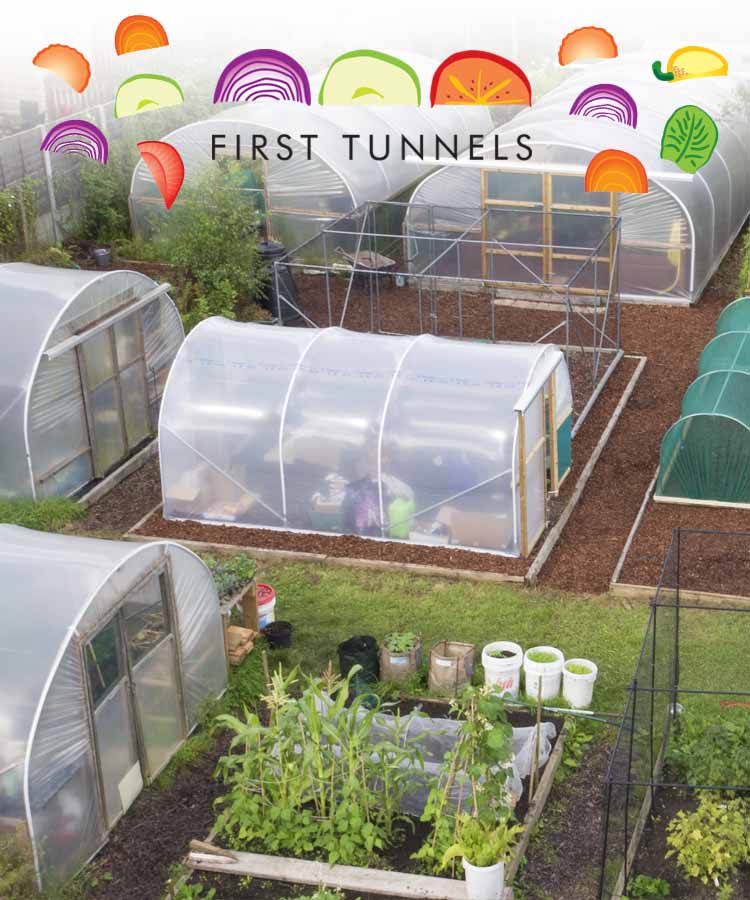If you are growing in the ground in your polytunnel, getting to know your soil type is one of the main keys to success. When you understand the soil where you live, you will be better able to understand the measures that can be taken to improve it and all the strengths and weaknesses that you as a gardener are up against. Different types of soil are better for certain types of plant, so understanding your soil is also important in order to choose the right plants for the right place.
There are six main broad soil types in the UK, clay soil, silty soil, loam, sandy soil, chalky soil and peat (rare in the UK, found mostly only in upland parts of Scotland). Of these, loam is the best type for growing plants and the easiest for gardeners. A loam is a composite of two or more of the other soil types and combines the best qualities of each. Within this category there are also shades of grey. You may, for example, have a clay-loam, which will be a mixture that tends towards clay, or a sandy-loam, which tends towards sandy soil.
Clay soil is the most nutrient rich type of soil. Unfortunately, it is also the most dense, heavy and prone to waterlogging, and freezing in winter. Silty soil is also nutrient rich and can hold a lot of water but is a little better at draining than clay. Sandy soil can be low in nutrients, and is not good at holding water, though some plants will thrive in the light, airy conditions. Chalky soil is alkaline and can also be very free draining, though is ideal for plants that like an alkaline pH. Peat is extremely rich in nutrients and organic matter, though can be on the acidic side. The luckiest gardeners have a perfect loam, which will be perfectly balanced in terms of moisture, organic matter, nutrients and pH.
By looking at and feeling your soil with your hands, you should be able to get a sense of the sort of soil that you are looking at. Damp clay soil clumps together and will form a smooth ball when rolled between the palms. Lighter soils will crumble and not form a ball. Loams will form a loose ball that will break apart easily when handled. Sand and chalk are often visible within the soil when closely viewed. Observing your soil up close and over time will help you to gain a better understanding of its properties.
